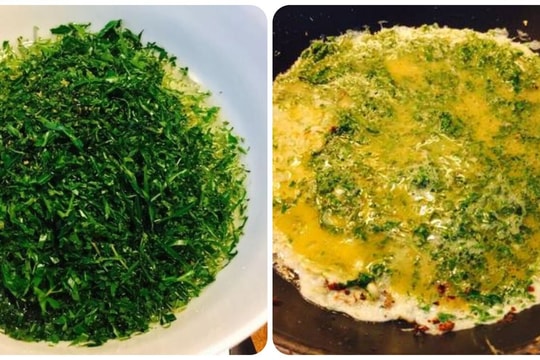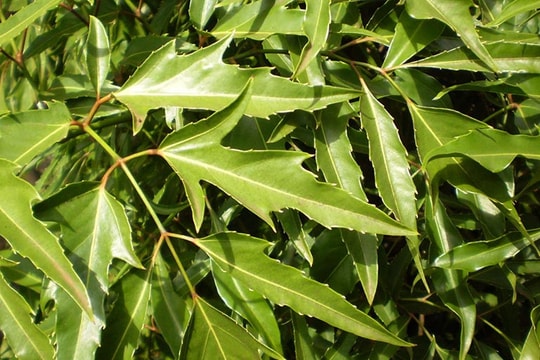The ancient beauty of the hundreds of years old communal house
(Baonghean.vn) - After hundreds of years of ups and downs, Lien Tri communal house in Lien Thanh commune, Yen Thanh district still exists in the countryside as a vivid testament to the rich cultural and historical traditions of an ancient land.
 |
Lien Tri Communal House, also known as Tam Toa Communal House, was built in 1801 under the Tay Son Dynasty, worshiping the village's tutelary god, Uy Minh Vuong Ly Nhat Quang - the 8th son of King Ly Thai To, a famous historical figure in the 11th century, who had great merit in "protecting the country and pacifying the people", governing, building, and expanding many areas in Nghe An. |
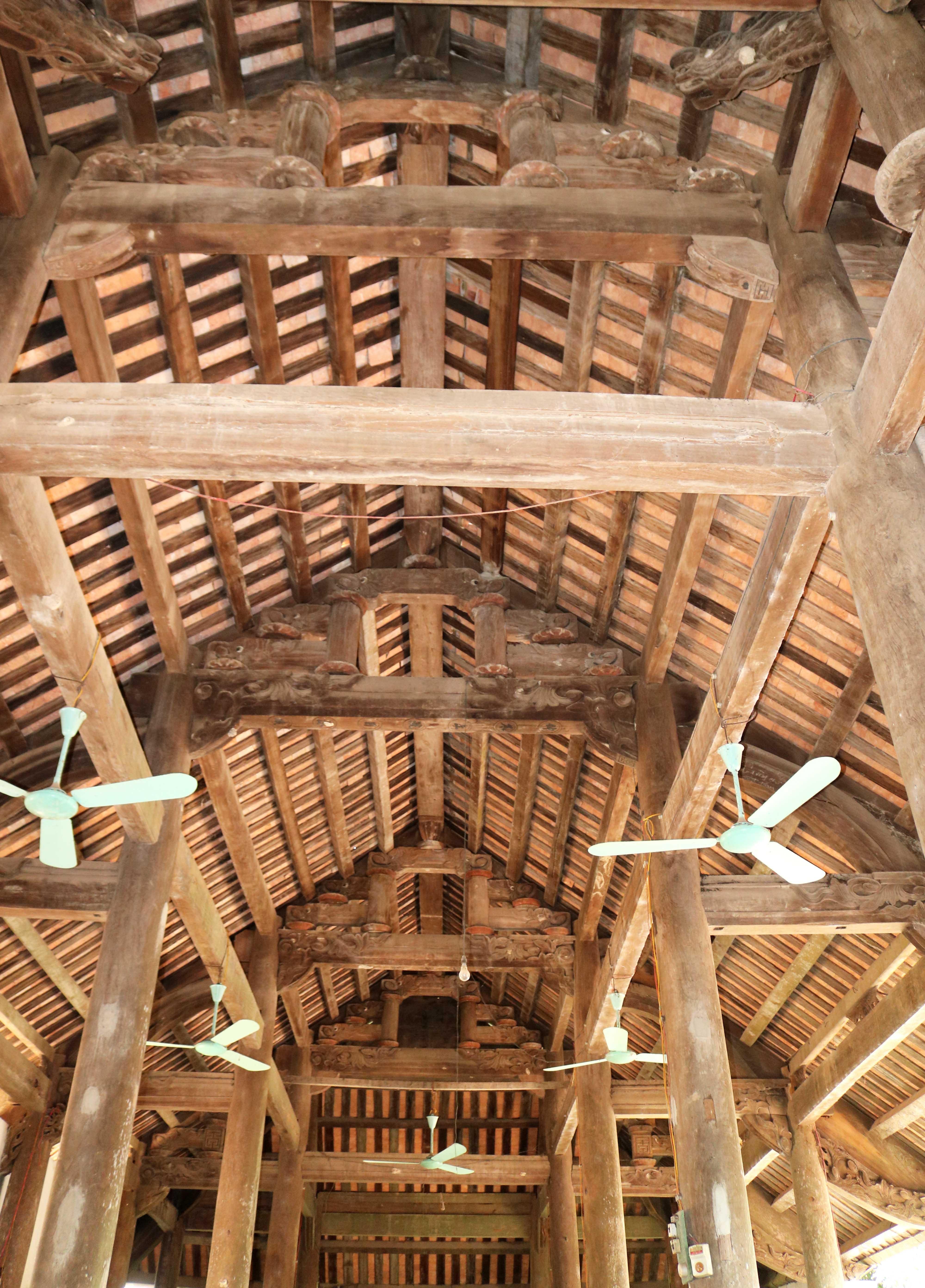 |
| In the past, the communal house had a “tam” shaped architecture, consisting of 3 massive lower, middle and upper halls. After the war years, the lower hall remained. In 1996, the local people built an additional sanctuary. The lower hall is a 5-room, 2-wing house, more than 20m long, nearly 10m wide, standing firmly on 24 ironwood columns. Inside the lower hall, the rafters are designed in the style of a gong rack with overlapping beams and brackets. On the beams, scrolls, etc., traditional themes are elaborately carved, making the structure of the communal house softer. |
 |
| The gable corners, each corner has a dragon-shaped head facing the center. Compared to other ancient communal houses in the province, Lien Tri communal house has the Nguyen Dynasty style, the wooden structures have a low density of sculptures, are dotted, but quite unique. |
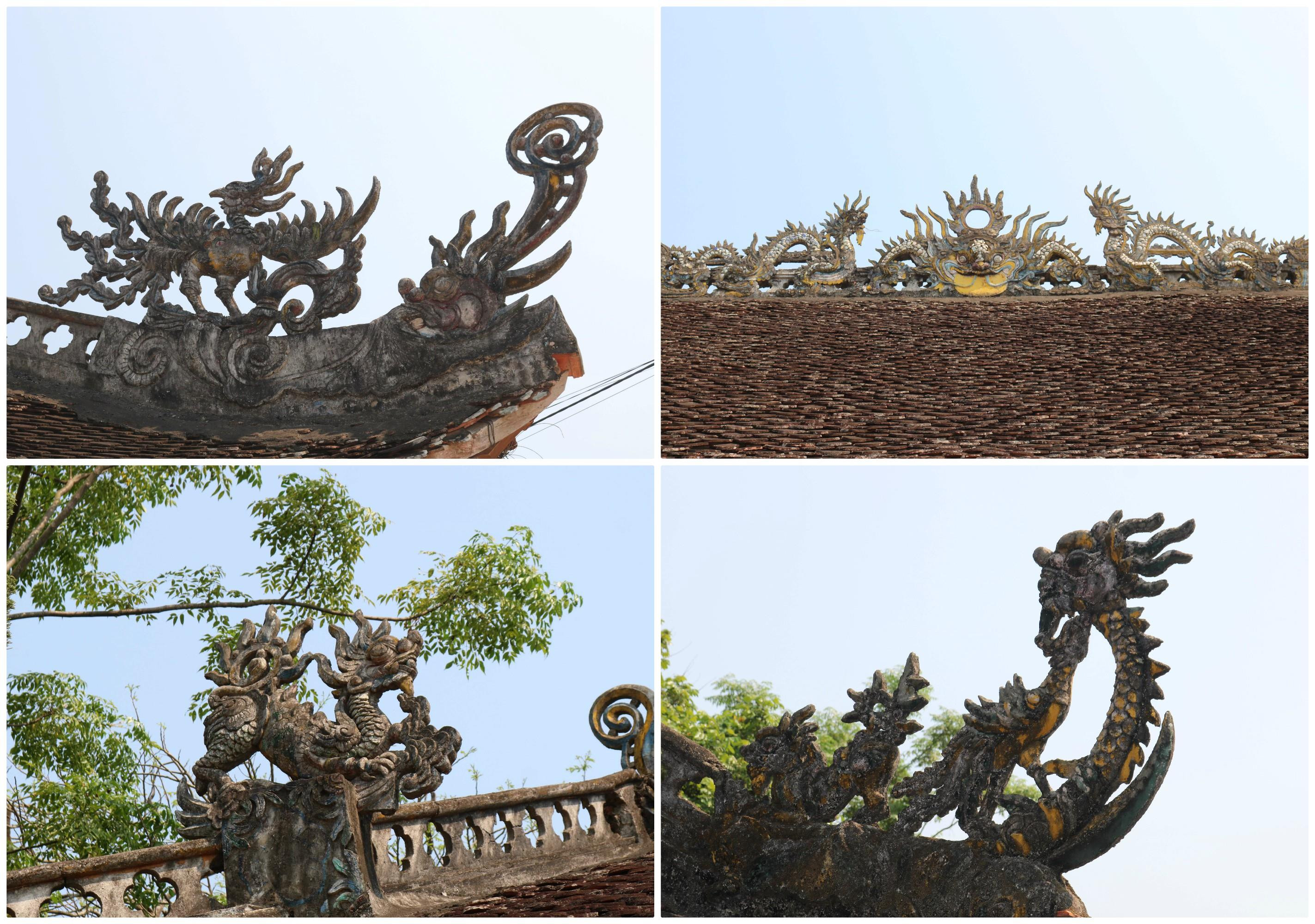 |
| The communal house roof is covered with scale tiles, the ridge is embossed with the image of "two dragons worshiping the moon", the curved head with graceful unicorns and unicorns, made of lime and quite sophisticated ceramic. |
 |
| In the communal house, there are still many ancient and unique artifacts, bearing the cultural and historical mark of a traditional countryside. Right in the middle of the communal house, there are two wooden horses facing the center, the horses' bellies used to be the place to hide revolutionary documents. |
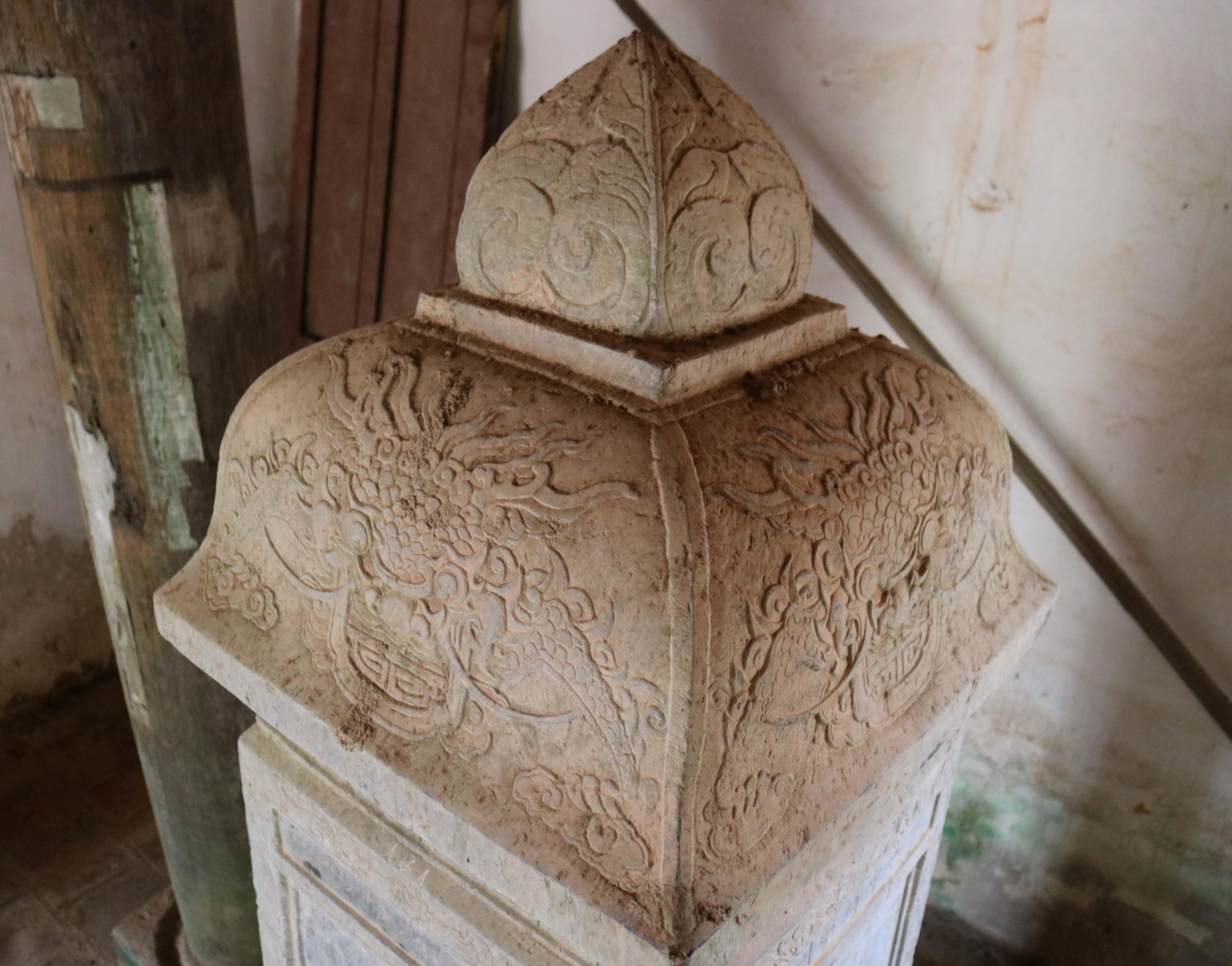 | |
|
 |
| The stele body is a block of stone with 4 equal rectangular faces, decorated with sophisticated patterns. On the 4 stone faces are engraved Chinese characters with a list of 30 scholars of the village through the exams. During its long existence, the National Historical - Cultural Relic of Lien Tri communal house is not only a vivid historical relic, converging and reflecting the noble traditional values of a cultural homeland, but also a place to educate, "fuel" the revolutionary tradition, humanity and studiousness of the homeland. Every year, on the 17th day of the 12th lunar month, Lien Tri village organizes a communal house festival, expressing respect, remembrance and gratitude for the merits of Uy Minh Vuong Ly Nhat Quang to the homeland and the country. |

